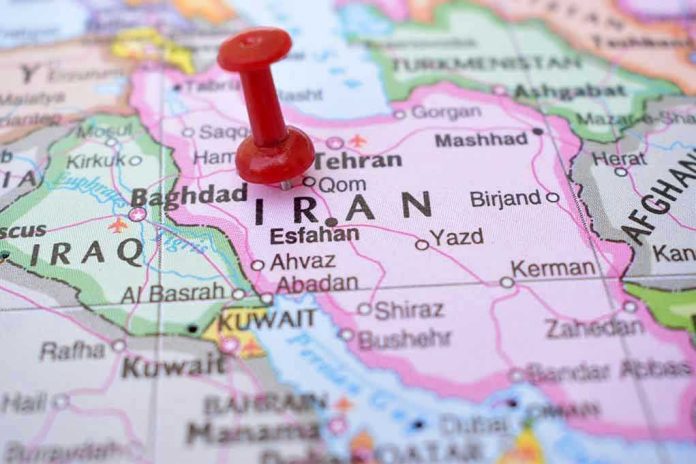
Iran’s regime faces global condemnation as it executes over 1,000 prisoners in 2025—targeting minorities and political dissenters in a brutal campaign that exposes the dangers of unchecked government power.
Story Snapshot
- Iran’s execution rate in 2025 is the highest in over 30 years, with at least 1,000 people killed in nine months.
- Ethnic minorities and political prisoners are disproportionately targeted, often after unfair trials and reports of torture.
- Less than 4% of executions are officially reported, highlighting extreme secrecy and lack of accountability.
- International outrage is mounting, but Iran’s authoritarian judiciary continues its crackdown with impunity.
Record-Breaking Execution Spree Reveals Authoritarian Abuse
Iran’s government has launched a sweeping campaign of executions in 2025, killing at least 1,000 people in the first nine months alone. This marks the highest annual execution rate in the country in more than three decades, according to Iran Human Rights and corroborated by other respected NGOs. The victims include a large number of individuals accused of drug-related offenses and an alarming proportion of ethnic minorities and political prisoners. The scale and speed of these killings have prompted human rights organizations to label the situation a “mass killing campaign,” raising urgent alarms about the unchecked power of authoritarian regimes when transparency and constitutional protections are absent.
April 2025 saw 110 executions in a single month—the highest monthly total in recent memory. Among those executed were prominent political prisoners such as Kurdish activist Hamid Hosseinnejad Heydranlou and four Baluch men, both groups representing ethnic minorities long targeted by Tehran’s security apparatus. Less than 4% of these executions have been publicly reported by official Iranian sources, underscoring the regime’s commitment to secrecy and its disregard for due process. Detainees often face unfair trials and reports of torture, with many put to death for non-lethal drug offenses that violate international human rights standards.
Minorities and Political Dissidents Face Heightened Persecution
Ethnic minorities—including Baluch, Kurdish, and Arab communities—bear the brunt of this execution wave. Political prisoners and dissidents are also in grave danger, with many sentenced to death after proceedings that lack transparency, legal representation, or adherence to basic judicial norms. NGOs have documented a dramatic escalation in executions since early 2024, with a 75% year-over-year increase in the first four months of 2025. Iran’s penal code allows capital punishment for a broad array of offenses, and the regime has a history of using the death penalty as a tool to suppress dissent and maintain control, often in direct defiance of international law.
International organizations, including the United Nations and European Parliament, have condemned Iran’s actions and called for intervention, but their influence remains limited. The Iranian judiciary, answerable only to the regime’s supreme leader, continues these practices with little external oversight. This unchecked power and lack of accountability starkly contrast with the foundational principles of the U.S. Constitution and the rule of law cherished by American patriots—reminding us of the dangers posed when governments erode individual rights and due process.
Global Backlash and Long-Term Consequences
The international response has been swift and severe. On May 2, 2025, a global coalition of human rights organizations issued a joint statement urging United Nations intervention, while the European Parliament and UN Special Rapporteur have denounced Iran’s “mass killing campaign.” Despite this, executions continue at an accelerated pace, deepening Iran’s isolation and raising the risk of further social unrest, economic sanctions, and diplomatic fallout. The ongoing repression has traumatized minority communities, weakened trust in the justice system, and contributed to a climate of fear throughout Iranian society.
BREAKING – Iran has executed at least 1,000 people in 2025: NGO
READ: https://t.co/8vJVNepdLn
Follow @InsiderPaper for more news pic.twitter.com/zmZntRU6d7
— crimsonbearz (@crimsonbearz) September 23, 2025
Legal experts and human rights advocates warn that these executions not only violate international norms but also inflict long-term damage on Iran’s legal and social fabric. The use of capital punishment for non-lethal offenses and political dissent undermines the very concept of justice. While Iranian authorities claim these actions are necessary for law and order, the overwhelming evidence points to a systematic abuse of power designed to crush opposition and silence minorities. As Americans, the lesson is clear: vigilance is required at home and abroad to defend individual liberty, due process, and the inalienable rights enshrined in our Constitution—lest we allow creeping government overreach to erode the freedoms for which so many have fought.
Sources:
Iran Sees 75% Increase in Executions During First Four Months of 2025 Over 2024
Iran executed at least 1,000 this year in prison ‘mass killing’: NGO
Iran Executed at Least 1,000 People in First 9 Months of 2025: Iran Human Rights
Iran Human Rights (IHRNGO) Official Website



